Balancing Profitability and Sustainability in Modern Business
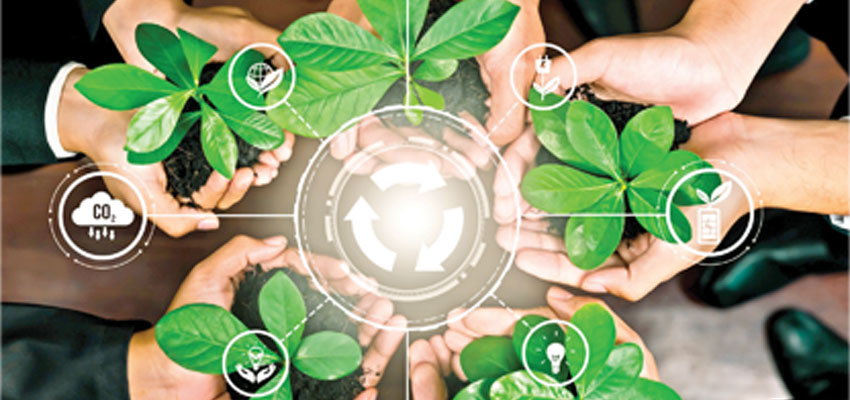
"India is making great strides towards sustainability, creating greener products and services that benefit both, businesses and the planet, opined experts during a panel discussion on Balancing Profitability and Sustainability in Modern Business, organised at Sri Balaji University, Pune (SBUP), as part of the international conference ‘Mimansa’. The discussion explored key themes such as indigenous innovation, ESG frameworks, digital transformation and much more. Corporate Citizen brings you excerpts from this discussion"
Ravindra Utgikar: Share your opening remarks about the conference.
Sangeeta Kale: I'm working as a research scientist and a professor in Defence Research and Development Organisation (DRDO). When we talk about sustainability, we always focus on developing indigenous products, and here energy is the key issue. As we go ahead, I will provide some examples of how we can achieve energy independence. However, I would emphasise becoming self-reliant in developing indigenous technologies. From the smallest components that we require in manufacturing processes, be it in any industry, we need to become independent. This is the need of our time. If we are able to restrict the imports and increase domestic manufacturing, only then can we talk about sustainability in a different way.
Chandrashekhar Chincholkar: The theme of the conference is, obviously, sustainability at its core. It is important for the MBA students, at this stage of their career, to learn about sustainability.

India has started a significant journey towards sustainability. The top thousand companies reporting on Business Responsibility and Sustainability Reporting (BRSR), the Indian version of ESG globally, stresses on one of the most important parameters, particularly R&D spend, to make their products and services green. One very important global parameter, which we need to improve upon, is the percentage of GDP spent on R&D. Currently, we are at 6-7%, but we have been at the same percentage level for the last 15 years, and that is one of the biggest pain points. The corporates need to learn to propel their R&D efforts for making their products and services green.
Samir Kukade: When we think of sustainability in relation to people, I believe that the whole concept of sustainability circles around person's livelihood and sustenance, and that becomes an important aspect of human resources or people management. I'm not taking it out only for the human resource function, rather taking human resource as a whole from the organisational standpoint.
I firmly believe that when commercial benefit comes into the play, there is a huge potential for improvement, and that will take sustainability efforts to a different level. So, it is important that we are at a right juncture, where we can really reap the benefits of this commercialisation of climate change activities, initiatives and HR function. People from HR function have a huge responsibility because the concept like ESG is also a responsibility of an HR, and an HR professional can make difference to the organisation’s life and the society both.
Sandeep Bhattacharya: Balancing profitability with sustainability, almost sounds like these two are on the opposite end of the spectrum. However, allow me to share perhaps an industrial example. If you look at the metal refining companies like Tata Steel, which produces steel from iron ore or Hindalco, which manufactures aluminium from bauxite—40% to 45% of their manufacturing cost, is the cost of electricity to run their furnaces and smelters. And, if you can reduce that cost of electricity by 5% or more, their profitability improves instantly. Hopefully, one hopes that they pass on some of their savings to the end customer, which also brings down the final cost of their product. So, sustainability becomes a contributor to profitability in their overall manufacturing and economic equation.
My second remark comes from a conversation with a taxi driver who was sharing his experiences. He told me about two people, whom he had transported recently. He had advised a certain time of the day for them to leave for the airport. However, these people ignored his advice, and so, it took them six hours to reach the airport and they missed their flight. He then had to drive them back to their hotel. If only they had taken his advice, then the amount of fuel consumed would have been just one-third or one-fourth of what was actually spent. The point of learning for us in this story is, how we behave in our personal lives is also a huge contributor to sustainability, given that we are 1.42 billion people. At an individual level, our daily behaviours— how much food we take on our plates, how often we turn off a dripping tap, or how frequently we switch off the unnecessary electricity usage—directly contributes to sustainability.
"One very important global parameter which we need to improve upon, is the percentage of GDP spent on R&D. Currently, we are at 6-7%, but we have been at the same percentage level for the last 15 years, and that is one of the biggest pain points"
— Chandrashekhar Chincholkar
Q: You (Sangeeta Kale) have been a scientist, innovator and also an entrepreneur. Today, science and technology has encompassed every aspect of our life, whether it is profitability or sustainability. Throw some light on the role of science and technology in balancing profitability and sustainability?

Sangeeta Kale: It all starts from colleges and universities—that's a place where young minds are nurtured in some sense. In all the educational institutions, we are generating huge skilled manpower, and young students are a product of that.
Now, when we think of integrating science and technology into the sustainability and profitability, it is very important that every student develops the skill of creating something indigenous in the market. For a long time, the youth in our country have always been looking for lucrative jobs, but I think now it's the time that we all try to cultivate the culture of entrepreneurship. This will enable them to think about what they can do for self-sustenance.
To give you a quick example related to sensors, since I work in this field, I would like to underscore that our country lacks development of indigenous sensors. Now here, whose responsibility is it to ignite young minds, and encourage them to develop the smallest gadgets that we are importing from China? You often visit e-commerce websites to buy microcontrollers and small chips. So, instead of importing these small gadgets, if we start developing them in our own country, we can achieve sustainability. This is the way to look at sustainability. When we have the technology and knowledge in our hand, we can improvise, and therefore we become resilient. So, don't just think of only getting a job, you can also give a job. Think out-of-the-box, and that's what universities and colleges are here for.
Q: With multinational companies coming in, they are bringing their technology and financial muscle, giving Indian companies run for their money. We have to still do the balancing act between profitability and sustainability. You (Samir Kukade) champion the balanced scorecard framework, which can actually help realise profitability and sustainability, while fighting competition and still achieving that goals. Tell us more about that framework.
Samir Kukade: It is important to understand how the competition is playing around, as we are sometimes overpowered by different multinationals. Managing this situation in a best manner is also crucial. I have worked with multinationals throughout my career, and now I'm working with a lot of Indian organisations. But, then I chose to start my own profession as a consultant by choice. This gave me an opportunity to work closely with the Indian entrepreneurs.
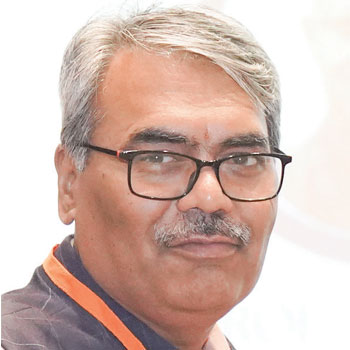
Let me first go to the basic concept of business sustainability and people sustainability. In my opinion, these are not very different. If you see companies like Mercedes-Benz, Fiat or Renault, they have existed for over 50 years. So, how have these organisations sustained in the environment? To me being sustainable means being in existence, growing, and maintaining a brand image in the society. These three factors happen to be very close to business sustainability. At the same time, people sustainability is much more than that, because there is an added angle to it. One aspect is, definitely continuation of the organisation, where I'm associated with it as an employee or a contributor. Second is, individual growth in the organisation, taking on new responsibilities, getting exposed to the new ideas and skills, and developing right attitude to succeed. Then, third is aspiration—how my aspirations are aligning with the organisation’s aspirations.
If you see the balanced scorecard concept, it balances all the aspects. First, it talks about customer, which is the integral part of the business. Unless you have a customer, your existence doesn't matter. Second is finance—you need hard cash and cash flow to manage business. Third is process— unless and until you have a process, you'll not be able to run the business in a similar rhythm. And, maybe that can be one aspect of sustenance. The fourth is people, and according to me that is the binding factor for all the first three.
Now, in a business, customer is nonnegotiable—you need to have a customer. But, at the same time, every industry has its niche, and the focus shifts accordingly. In manufacturing organisations, apart from the customer, the focus is on the process, quality and the brand image. On the other hand, in service industry, the capital is people, as their 80 per cent of the expenses are related to human capital. In a financially competitive market, where product can be anything, finance becomes very critical.
"If we are able to restrict the imports and increase domestic manufacturing, only then can we talk about sustainability in a different way "
— Sangeeta Kale
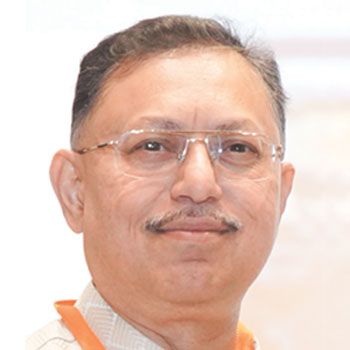
Fortunately, having worked in all three kinds of industries, I have realised that all these three factors play a vital role. We even used to call some companies as finance-driven businesses, regardless of their industry, including automobile companies. These things matter a lot while managing the business for long-term for growth. These four things will have to be seen at a micro level, improving in each area that decides the organisation’s future profitability. So, the way we would like to focus in the business makes the thing crucial.
One last aspect is the role of artificial intelligence (AI). It's a buzzword, things are moving in the right direction and becoming more simplistic for us. However, when I look at it as a human resource professional or a business person, I see that there is an added angle — emotional intelligence. This is where people will have an edge over AI, and that would be the differential factor. So, the way we progress in all those four factors, simultaneously managing AI, will decide organisational profitability. Here onwards, maybe innovation will support the sustainability.
Q: How can ESG actually help ensure that you make profits, and don't damage planet Earth irrevocably?
Chandrashekhar Chincholkar: India, from reporting perspective, has started with Business Responsibility Report (BRR) in 2012. So, sustainability reporting has been there in the corporate mindset. Initially, it started with 100 companies, then went to become 500 companies. BRR introduced certain norms, which were reported, and then in 2015, came the United Nations Sustainable Development Goals (UNSDGs). The UNSDGs enhanced corporates reporting parameters. These developments made the corporates more aware of the need to adopt sustainability, but at the same time, the cost was paining them.
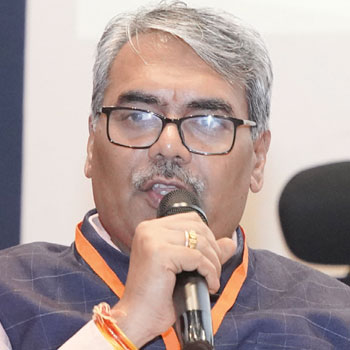
If you analyse the developments in reporting parameters, corporates were already reporting financial data quarterly. Today, Business Responsibility and Sustainability Reporting (BRSR) on ESG is an annual requirement for SEBI, as well as in the balance sheet. Although, it is a non-financial reporting, the numbers involved energy consumption, renewable energy, fossil and plans on making RE100, are very serious.
There is a climate group globally, which most of the corporates want to follow. So, the companies adhering to goals of the group, need to declare their plan to become RE100, specifically mentioning the year in which they will actually become. This type of reporting is actually changing the corporates’ mindset. Achieving RE100 is a step-by-step planned process, and it cannot be done overnight. Whether it is services or manufacturing industry, it needs to be looked from the aforesaid parameters, while meeting the reporting parameters. At the same time, keep investing from your savings or profits, to progress towards sustainability. Besides, if you look at Global ESG Assets Under Management (AUM), it is around $30 trillion, and it is likely to go to around $65 to 70 trillion in the coming years.
Q: How are digital disruptions helping get inch closer to achieving profitability and sustainability? As we know, AI works in our favour, helping us achieve sustainability goals while it itself is an energy guzzler.
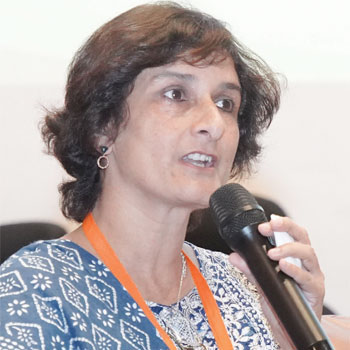
Sandeep Bhattacharya: The first use case that jumps into my mind is Google. It consumes a small amount of electricity every time you search. And, if you search for ChatGPT or any other AI, the energy consumption is higher. Now, Google themselves have created a process to save electricity. They created a website called www. blackle.com, which offers the same Google search experience with a complete black background. This small change leads to lesser electricity consumption in millions of computers worldwide. When you go on to blackle.com, you will also see a beautiful live and real-time energy saving counter just below the search box, displaying the number of watt-hours saved up to that moment. This is Google's effort at trying to reduce the global power consumption. Will AI do what everyone expects it will? The honest answer to it is — no one knows, not even the people who run the AI companies. Around five years back, the latest technology was blockchain, and before that, it was analytics, preceded by Enterprise Resource Planning. Years earlier, the industry was focused on the Y2K (year 2000) problem. The technology industry always needs a peg to hang their hat on, and now will that sustain in future, we have to see.
"To me being sustainable means being in existence, growing, and maintaining a brand image in the society. These three factors happen to be very close to business sustainability "
— Samir Kukade
Remember, AI is an algorithm based on programming rules and it is no match for the human brain, the most powerful computer in the universe. Will AI be able to sustain in the manner that we are thinking? It's a question mark, and not even Samuel Altman, the CEO of OpenAI, knows the answer. Time will tell, if the use cases of AI offer tangible economic value to human beings.
Consider Uber—the cab service we all use. It broadcasts traffic congestion updates to its drivers on a regular basis, and the high-demand areas where you are likely to get trips. They are analysing a lot of data through applying AI algorithms to it, helping its drivers to achieve sustainable incomes. Such use cases are to be marked in letters of gold, because they're offering tangible economic value to human beings.
Q: As a startup entrepreneur, Sangeeta Kale, what are your perspectives on how startups look at sustainability and profitability? And, how industry-academia collaboration can actually up the ante in this direction.
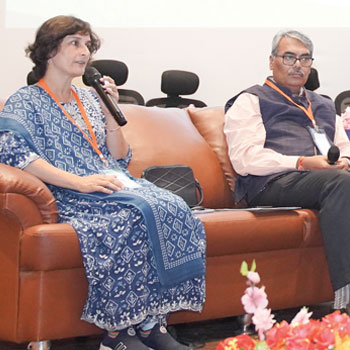
Sangeeta Kale: About the startup ecosystem, I would say that in the last 7-8 years or so, the startup ecosystem is looking very promising. From the academia and the students’ perspective, I can say that the Government of India has made significant efforts to establish incubation centres in universities. Then, the concept of Technology and Innovation Hubs (TIHs) has been introduced. These kind of systems benefit professors or students. To support this, the government is allocating substantial funds for advanced research, which can come into the market as small startup companies. If young students from different backgrounds can come together as a nice team and incubate a company, then the government is all there to help them.
The second important aspect is, academiaindustry collaboration, a much required initiative. We are going through a transition, as most of our technologies were initially imported, when our industries were primarily involved in assembly culture. So, the R&D culture in an industry was not that advanced on one side. On the other side, most of the professors were involved in writing publications and patents, rather industry-driven innovation. However, this needs to change and we should have our own indigenous production. In that sense, if industry and academia collaborates, it will be wonderful. And for that, government is making significant efforts.
Q: How do you (Samir Kukade) get people aligned to startups and MSMEs? What roles do leaders have in walking the talk?
Samir Kukade: Today, there is a great shift from looking at industry only as a job market, to becoming an entrepreneur. The passion for entrepreneurship has increased a lot, with youngsters coming into startups and MSMEs. They aspire to do something different, often coming up with value creation ideas. But then, they require support and that becomes a unique and demanding combination from the industry.
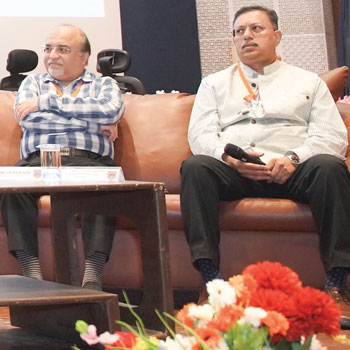
Coming back to the people, the backbone for any small-scale startup—knowledge, skills and attitude, are the three important aspects for any individual professional to excel in his or her profession or career. But, everybody is not looking for a big fat salary. As a human resource student, I believe that each individual has different motivators. You need to find out your own ‘fish’ while working in the industry.
In startups or MSMEs, there are limited financial resources, but there is a huge amount of satisfaction of creating something, whether it is building systems and gaining visibility for products and services. So, I have always advised MSMEs or startups to visit educational institutes, as students come up with a lot of ideas, enthusiasm and vigour. But then, you also have to look for the passion. If you join a startup or MSME, and your first concern is salary, then you may need to step back because MSMEs are not able to offer big salary initially. However, you will grow with the organisation.
Lastly, while money is important, the question is, how we can create a variable income scheme for the employees, through which both the company and employee can grow? This way, MSMEs can compete with the salaries of bigger organisations. MNCs are losing their benefit of low cost in India, and there are salary caps coming in. Once an employee has reached to the highest salary level in a market, they will get money annually, but not increments. So, these are the different solutions for MSMEs to look at people management in a different way
Q: You (Chandrashekhar Chincholkar) talked about ESG and BRSR framework earlier, so what is the role of policies and how are global policies shaping up? How are they actually driving this whole game of sustainability?
Chandrashekhar Chincholkar: Beginning with the US, the largest economy globally with around $25 trillion of economic size, they came out with the policy for a population of just 35 crore. Their incentive plan for adopting renewable energy and new mobility is nearly $400 billion—a significantly higher amount compared to India. If you look at all the Production Linked Incentive (PLI) schemes put together today in India, they are less than two lakh crores. But, if you look at the population of India, which is four times of the US, and the land mass, which is onefourth of the US, it is important that we need to incentivise people in the industry a lot. Although, industry will come forward, obviously, they need to be initially supported.
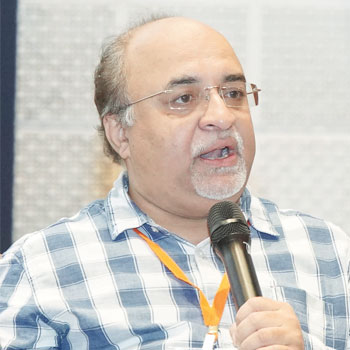
In all my deliberations at the central government level, we have advised the government to look at worth Rs. 15 to 20 lakh crores of total incentives for new energy and new mobility, and not just get limited to rupees 2 or 2.5 lakh crores. Obviously, there are tenders which have come out for green hydrogen, and people have actually not gone ahead with the real incentives. But, industry needs incentive and it is a crucial aspect. One potential strategy could be to integrate Corporate Social Responsibility (CSR) spending into these incentives. Many corporates struggle to fully utilise their CSR budgets. For example, Reliance has Rs.1600 crores CSR, Tata TCS would have probably Rs.900 crores CSR, and they're not able to utilise that money because they don't see visible programmes to allocate these funds effectively, particularly in education, healthcare and AI.
I've recently had a presentation done on how CSR money can be used for electric mobility at one of the large corporates. They have actually accepted the thought process, and so we are trying to push that forward. In Europe, the amount of capital employed or money given for incentivisation is significantly larger. But, Europe suddenly has come out with Carbon Border Adjustment Mechanism (CBAM). So now, in every state there will be a carbon tax from 1 January, 2026.
And, they're now preparing corporates to report on carbon. Corporates, including Tata Motors, have started reporting. Somewhere government support is required to deal with these things.
Why is it important for corporates to look at the journey of sustainability? Three companies have studied from BRR to BRSR— Reliance market cap in 2012-13 was $50 billion, today it is $250 billion; Infosys from $21 billion to $80 billion; Hindustan Unilever from $12 billion to $70 billion. So, these are the benefits of looking at sustainability.
"At an individual level, our daily behaviours— how much food we take on our plates, how often we turn off a dripping tap, or how frequently we switch off the unnecessary electricity usage—directly contributes to sustainability "
— Sandeep Bhattacharya
Q: We heard about industry, academia and the government's role in policy setting up. Clearly, there is an agreement that you need all hands on the deck. What dimension can we bring in here? How should this collaboration pan out? Who should take lead and what should be the way forward?
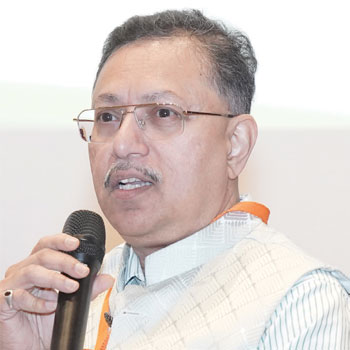
Sandeep Bhattacharya: If I have to take a magic wand and wave it a few times for the outcome to happen, my heartfelt desire would be that sustainability projects should be at a community level. The classic case study in this is the country of Japan, which does a huge amount of work at a community level and make their small villages completely self-sustaining economically, commercially, financially and environmentally. For me, at a community level, we should create an ecosystem—projects or prototypes which reach the industrial production. We have to pick up the use case, which is practical to implement on the ground for that human being who toils today.
PANELLISTS
- Prof. Sandeep Bhattacharya, former senior vice president, Onward Technologies Ltd.
- Chandrashekhar Chincholkar, founder and CEO, CMK Advisors LLP
- Samir Kukade, senior HR and business consultant
- Sangeeta Kale, senior professor, Defence Institute of Advanced Technology (DIAT), DU, DRDO; dean-research and director (international cooperations); and director, Navyukti Innovations Private Limited
- Ravindra Utgikar, vice president and SBU head, Wilo Group and Director, COEP's Bhau Institute of Innovation, Entrepreneurship and Leadership (Moderator)